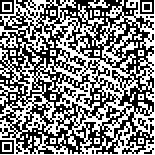| 本文已被:浏览 1142次 下载 1120次 |

码上扫一扫! |
|
|
| 刺参响应灿烂弧菌侵染的基因组DNA甲基化水平和转录组差异及其关联分析 |
|
李欣容1,2, 廖梅杰2,3, 李彬2,3, 荣小军2,3, 畅孟阳2,3, 王印庚2,3, 于永翔2,3, 张正2,3, 范瑞用4, 刘清兵4
|
|
1.上海海洋大学水产与生命学院 上海 201306;2.中国水产科学研究院黄海水产研究所 农业农村部海洋渔业可持续发展重点实验室 山东 青岛 266071;3.青岛海洋科学与技术试点国家实验室海洋渔业科学与食物产出过程功能实验室 山东 青岛 266071;4.青岛瑞滋集团有限公司 山东 青岛 266408
|
|
| 摘要: |
| 为探讨病原菌胁迫下刺参(Apostichopus japonicus)基因组DNA甲基化水平和转录组表达的差异,本研究采用人工攻毒侵染胁迫,获得刺参化皮体壁组织,并以未攻毒组的健康体壁组织为对照,对刺参2种体壁组织进行全基因组甲基化测序(WGBS)和转录组高通量测序,解析刺参体壁基因组DNA甲基化差异,筛选响应病原胁迫的差异甲基化区域和差异表达基因。同时,通过基因组甲基化和转录组联合分析,筛选负相关关联基因,为解析刺参响应灿烂弧菌(Vibrio splendidus)侵染的分子机理提供基础数据。结果显示,刺参对照组和侵染组基因组总甲基化水平分别为(3.59±0.04)%和(3.87±0.27)%,侵染组甲基化水平显著升高;在发生甲基化的位点中,攻毒组和对照组的mCpG占比分别为83.06%和81.91%,mCpG为最主要的甲基化形式。本研究共筛选出差异甲基化区域(DMRs) 626 677个,注释到23 706个功能基因。转录组测序共检测到29 290个基因,筛选到差异表达基因496个,其中,上调基因214个,下调基因282个。在基因组甲基化与转录组的关联分析中,筛选到180个负相关关联基因,其中,差异甲基化区域位于启动子区域的负相关基因为60个。对负相关关联基因的GO和KEGG富集分析,筛选到相关通路和LRR、hsp20和CARD等关键基因。本研究将为解析刺参抗病的表观遗传调控机制提供数据,也为刺参抗病性状选育提供科学参考。 |
| 关键词: 刺参 DNA甲基化 转录组 关联分析 |
| DOI:10.19663/j.issn2095-9869.20210424001 |
| 分类号: |
| 基金项目: |
|
| Genomic DNA Methylation Levels and Transcriptome Differences of Apostichopus japonicus in Response to Vibrio splendidus Infection and Their Association Analysis |
|
LI Xinrong1,2, LIAO Meijie2,3, LI Bin2,3, RONG Xiaojun2,3, CHANG Mengyang2,3, WANG Yingeng2,3, YU Yongxiang2,3, ZHANG Zheng2,3, FAN Ruiyong4, LIU Qingbing4
|
|
1.College of Fisheries and Life Science, Shanghai Ocean University, Shanghai 201306, China;2.Key Laboratory of Sustainable and Development of Marine Fisheries, Ministry of Agriculture and Rural Affairs, Yellow Sea Fisheries Research Institute, Chinese Academy of Fishery Sciences, Qingdao, Shandong 266071, China;3.Pilot National Laboratory for Marine Science and Technology (Qingdao), Laboratory for Marine Fisheries Science and Food Production Processes, Qingdao, Shandong 266071, China;4.Qingdao Ruizi Company, Qingdao, Shandong 266408, China
|
| Abstract: |
| DNA methylation is an important epigenetic modification that plays a key role in gene expression regulation. In this study, two groups of sea cucumbers (Apostichopus japonicus) were prepared. One group had skin ulceration syndrome body wall (PT16S) under stress from Vibrio splendidus infection at a concentration of 1×106 CFU/mL (LD50); the other group had a healthy body wall (PT10H). Genomic DNA methylation levels and gene expression differences between the two groups were detected using whole-genome bisulfite sequencing (WGBS) and transcriptome sequencing. The key gene ontology (GO) terms and KEGG terms engaged in the immune response were selected using association analysis. The results showed that the total methylation levels of the A. japonicus genome of PT10H and PT16S were (3.59±0.04)% and (3.87±0.27)%, respectively. The methylation levels of the A. japonicus genome under pathogen challenge significantly increased; mCpG accounted for 83.06% and 81.91% of all the methylated sites in PT16S and PT10H, respectively, indicating that mCpG was the most important methylation form in the sea cucumber. A total of 626 677 differentially methylated regions (DMRs) were screened and annotated into 23 706 functional genes. A total of 496 differentially expressed genes were screened, including 214 up-regulated and 282 down-regulated genes. A total of 180 negatively correlated genes were isolated using association analysis between genomic methylation and transcriptome, of which 60 genes had DMRs located in promoter regions. Based on GO and KEGG enrichment of the 180 negatively correlated genes, key genes such as LRR, Hsp20, and CARD were selected to play a critical role in the immune response. The results would provide primary data for the epigenetic regulatory mechanisms of A. japonicus and provide a theoretical reference for A. japonicus breeding. |
| Key words: Apostichopus japonicus DNA methylation Transcriptome Association analysis |